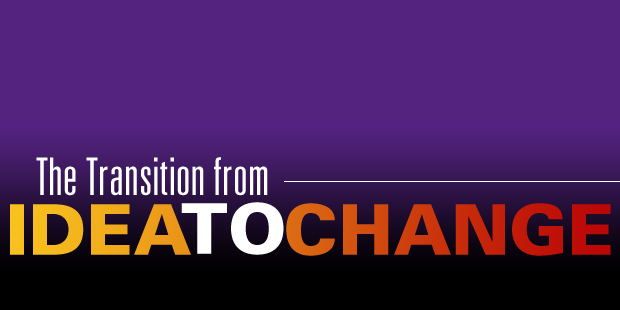
The Transition from Idea to Change
All leaders have ideas, but not all ideas lead to change. What separates the dream from reality? Businessweek recently reported on the history of the bar code. It sounds mundane, but there is something to learn about change implementation from the story.
In 1948 two graduate students at the Drexel Institute of Technology overheard a supermarket executive discussing a key problem: the need for an automatic system to read each product item. Working together, the two students helped change the way retailers do business. Before the bar code, supermarket clerks had to punch numbers into a keypad. It was slow. The process was prone to keystroke errors. After the bar code, everything is scanned swiftly and with minimal errors (and thank goodness for the self check-out sections—impossible without the bar code).
We experience the change to the bar code system almost every day. It’s ubiquitous. But how did the idea transition to reality? What can churches learn from this process?
Simple with obvious benefits.
Ideas that transition into changes are typically simple and have obvious benefits. How many times have I said, “Why didn’t I think of that?” The best ideas are simple. The best ideas have obvious benefits. The bar code was simple—just a bunch of lines inspired by the dots and dashes of Morse code. And yet the benefits were profound.
Are the ideas you’re floating your church leaders simple? Are the benefits obvious? Not every idea needs to be simple. Indeed many changes in the church are complex, involving a cultural shift among the people. But the ones most quickly adopted are simple with obvious benefits.
Standard process
The great Wally World of Bentonville gave the bar code a boost. As Wal-Mart grew (along with other large grocery chains), so did the use of the rather efficient bar code, which became a critical part of retail distribution systems. Critical mass was achieved, however, with the adoption of a standard system. The scanners were expensive to retailers. Manufacturers had to change systems to put the labels on all the products. Without a standard, each retailer would have its own system and each manufacturer its own label. When the National Association of Food Chains chose the UPC bar code as the standard, enough companies jumped on board to make it a reality.
If you’re mulling through an idea that will be a different reality for different groups in the church, then you’re less likely to see the idea transition into change. If the change effort is not standard for the entire church, then people are likely to be confused. For instance, having two discipleship processes for two groups is likely to produce misunderstandings and misperceptions. To give another example, if you’re leading a multi-site church with individual systems for each site, then you’re less likely to institute changes across all sites. The more a leader can make a new idea relevant to the entire church, the likelier that idea will transition into change.
Flexibility
The bar code went through several phases. The original design was a circle. But designers soon discovered during printing the ink would smudge in the direction of the running paper. So the linear form we know today was created. The original creators of the circular bar code could have scoffed at the proposed change, but they were flexible. The idea was not about shape or form but rather use.
If you’re working through an idea for your church, then make it simple, standard, and. . . flexible. Neither simplicity nor standards should become so rigid that—as the change implementation begins—an idea cannot evolve over time. A good idea becomes better through the multi-workings of the people in the church. As the leader, most changes will begin with your ideas. But your ideas are not the endpoint. The best vision for a church combines the simplicity of a leader’s idea with the involvement of the people. As a leader, you must be flexible with your ideas in order for the entire congregation to make them their own.
It’s fun to dream up new ideas. The hard work begins in attempting to implement new ideas. Change occurs most smoothly when ideas are simple, standard, and flexible.
Read more from Sam here.

Tags: Change, Leadership Development, Sam Rainer











